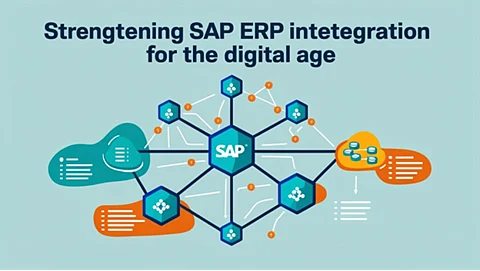

An accomplished enterprise IT strategist with deep expertise in optimizing SAP ecosystems brings valuable insight into one of today’s most pressing enterprise challenges. In this article, Venkata Satish Polu presents a practical blueprint to enhance SAP ERP interoperability in multi-vendor environments. His research blends technical depth with real-world relevance, offering clear strategies for seamless system integration. The framework outlined serves as a guide for enterprises navigating the complexities of digital transformation.
Modern enterprises rely on SAP ERP as the foundation of their operational and financial systems. However, the diversity of application portfolios, cloud deployments, and legacy infrastructures creates a fragmented environment. Integration efforts now consume more than a third of IT budgets, with nearly 40% of SAP project delays tied to interoperability issues. As organizations embrace hybrid models, where systems span both cloud and on-premises deployments, seamless SAP integration has become essential—not optional—for digital transformation success.
One of the most significant barriers to interoperability lies in data transformation. SAP’s intricate, normalized relational data model clashes with modern formats like JSON and XML used by external applications. Mapping these distinct models requires precision and effort, accounting for up to 70% of total integration workloads. The challenge extends beyond format conversion to managing encoding inconsistencies, data type mismatches, and vast historical data repositories.
Specialized tools such as SAP Data Services and Integration Suite now empower organizations to handle these complexities efficiently. By implementing canonical data models and parallel processing, businesses have achieved data transformation speeds exceeding 350 million records per hour, significantly cutting processing time and reducing manual intervention. These advances are pivotal in making previously inaccessible SAP data available for analytics and decision-making.
Integration platforms have become the linchpins of SAP interoperability. These middleware solutions simplify connections between SAP’s backend and modern user interfaces, enabling faster development cycles and more stable environments. By abstracting SAP’s technical intricacies, middleware allows for standardized communication and streamlined testing—reducing test cycle times by up to 50%.
The shift from traditional Remote Function Calls (RFCs) to modern RESTful APIs has improved flexibility and shortened development timelines. Organizations that adopt middleware-backed API integrations consistently report quicker go-to-market cycles, enhanced system maintainability, and better performance metrics.
Since enterprise systems today become ever-more modular, API-centric can be considered the primary approaches to ing the agile integrations into SAP. REST APIs represent the orderly and scalable means for third-party applications to talk to SAP. The reduction in integration times from months into weeks or even days makes the practice feasible. Their lifecycle measures allow for strict governance, monitoring, and security controls to be placed upon the APIs and thereby ensure the uninterrupted and secure access to disparate data.
The emergence of microservices is thus further impacting SAP integration: breaking down monolithic applications into smaller applications consisting of independently deployed services. And with modern deployment models such as Kubernetes and serverless, this level of agility reduces infrastructure overhead further. These advancements thus foment an environment in which organizations can rapidly respond to emerging demands for launching new digital services to alleviate system complexities.
This is a kind of thing that needs to be highly-scaled for long-term interoperability success, especially if occurring in an environment whereby an SAP ERP has to interface with an increasing number of third-party applications. Enterprises are increasingly deploying integration architecture capable of elastic scalability, so they may withstand spikes in transaction volume and data flow without loss of performance. Adoption of containerized services and load balancers, along with cloud-native features like auto-scaling, keeps the integration layers responsive to widely varying demand levels. It is this adaptability that, in turn, allows a business to scale out at will with minimal friction in supporting changes in their business model and geographic expansion.
Governance frameworks that are comprehensive ensure the sustainability and compliance of SAP integrations. Complexity in integration landscapes probably increases risks of misconfigurations, data inconsistencies, and non-compliance. Setting up Integration Competency Centers (ICCs) or equivalent governance structures help to standardize processes, centralize oversight, and reduce rework. These are the policy enforcers on data stewardship, API use, version control, and more. Where governance infrastructure exists, organizations observe clear visibility into their integration landscape, thereby enabling optimal decision-making and aligning IT initiatives toward strategic business objectives.
To sum up, SAP ERP integration has evolved into a bit of strategic prerequisite for resounding success in the digital arena. With middleware, APIs, and microservices, organizations perform seamless operations across multifarious IT realms. Every integration places security at its helm to ensure compliance and protection of critical data. These transformations provide enterprises a self-scaling and an agile adaptability promise. As Venkata Satish Polu says, “Long-term growth and resilience can be driven by real-world interoperability.”
